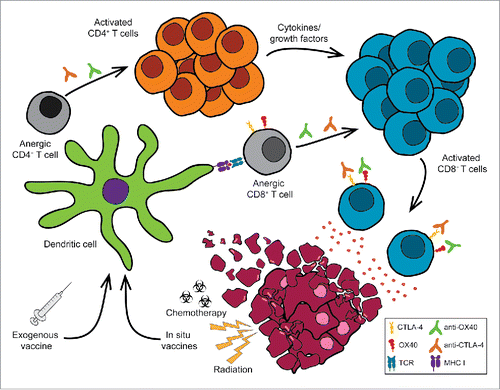Figures & data
Figure 1. Turning the tide: restoring the function of anergic tumor-infiltrating CD8 (T) cells. Tumors can induce immune suppression through a variety of mechanisms including the induction of T cell anergy. Treatment with immunotherapy agents including T cell agonists (e.g., anti-OX40, anti-4-1BB, anti-CD27, anti-GITR mAb) and checkpoint blockade (e.g., anti-CTLA-4, anti-PD-1 mAb) enhance anti-tumor immunity leading to tumor regression. However, these combinations alone are not sufficient to restore the function of anergic cytotoxic CD8+ T cells. The addition of exogenous tumor-specific vaccines or in situ vaccination (e.g., chemotherapy, radiation therapy) plus dual anti-OX40/anti-CTLA-4 therapy can rescue anergic CD8+ T cells to promote tumor regression and significantly enhance long-term survival.

